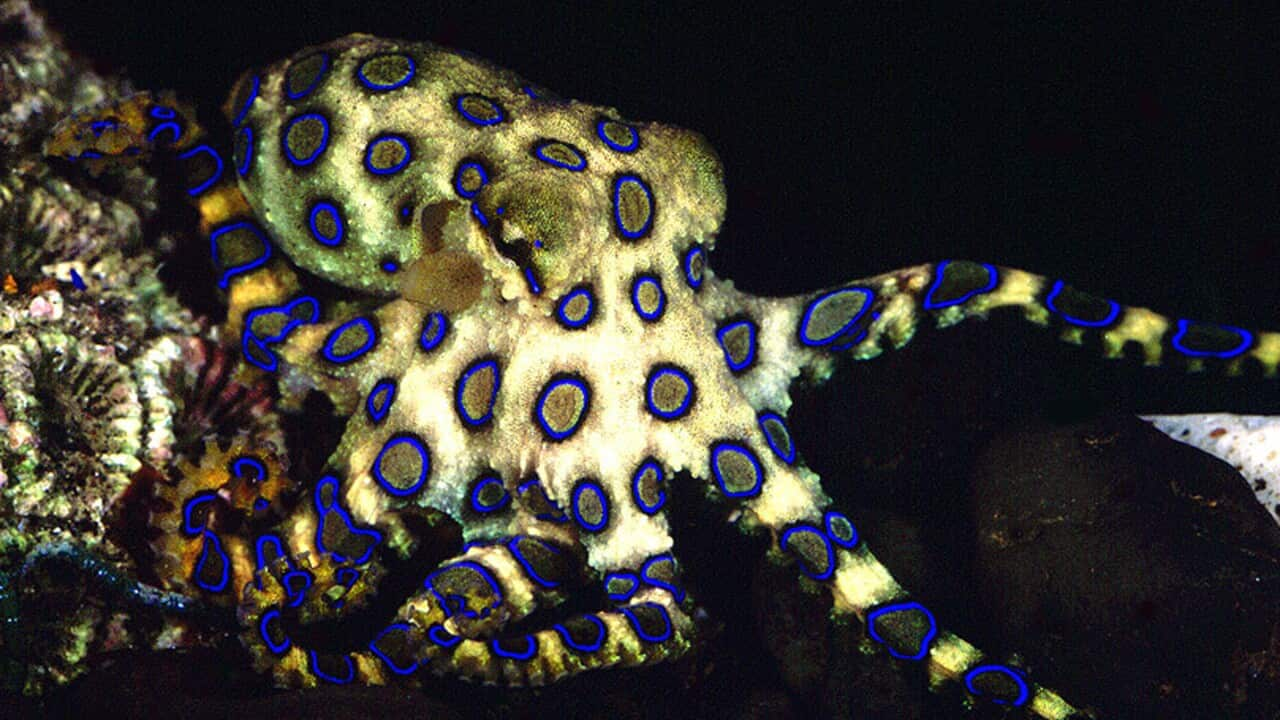Key Points
- The biggest male funnel-web spider ever discovered has been handed into the Australian Reptile Park.
- The spider has a leg span measuring 7.9 cm and will be part of the park's lifesaving venom-milking program.
- The Australian Reptile Park encourages members of the public to safely catch funnel-web spiders and hand them in.
The biggest male funnel-web spider ever discovered was donated to the Australian Reptile Park this week.
The spider, who has been named Hercules, has a leg span of 7.9 cm and fangs that could pierce through a human fingernail.
Sydney funnel-web spiders usually range in length from 1-5 cm, with females generally being larger than males.
“We’re used to having pretty big funnel-web spiders donated to the park," spider keeper Emma Teni said.
"However, receiving a male funnel-web this big is like hitting the jackpot."

Spider keeper Emma Teni said that receiving a male funnel-web this big is like "hitting the jackpot". Credit: Caitlin Vine/Australian Reptile Park
Colossus, the park’s largest male funnel-web spider before Hercules arrived, has a leg span of 7.8cm. He was handed to the park in 2018. A female funnel-web measuring 8cm and dubbed Megaspider was donated in the same year.
“Whilst female funnel-web spiders are venomous, males have proven to be more lethal. With having a male funnel web this size in our collection, his venom output could be enormous, proving incredibly valuable for the park’s venom program,” Teni said.

The Australian Reptile Park's new spider Hercules has a leg span of 7.9 cm and has fangs that could pierce through a human fingernail. Credit: Caitlin Vine/Australian Reptile Park
The Australian Reptile Park regularly encourages members of the public to safely catch and bring in funnel-web spiders for its antivenom program.
"Collecting a funnel-web is super simple," Teni said.
"All you need is a jar and a long spoon. By gently encouraging the spider into the jar, and placing a lid on, you have him safely secured to drop off at one of our many drop-off locations."
The drop-off zones are located around Sydney, the Central Coast and Newcastle.
"All facilities are provided with a spider safety kit to house the spiders until the Australian Reptile Park staff can come and pick them up each week," Teni said.
Spiders that have been handed in participate in a vital program where their venom is milked weekly and turned into antivenom, saving up to 300 lives per year.
The Australian Reptile Park is the only facility in Australia that milks funnel-web spiders.

At the Australian Reptile Park, funnel-web spiders are milked weekly for their raw venom, which is sent off to be made into lifesaving antivenom. Credit: Caitlin Vine/Australian Reptile Park
Recent rainy weather combined with intense humidity has provided the perfect conditions for funnel-web spiders to thrive.


